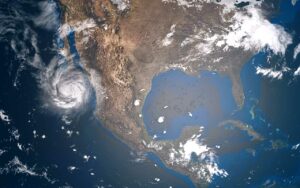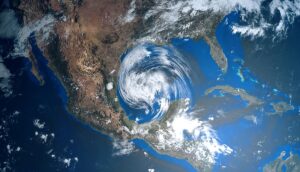An interstellar mystery object has been confirmed as the first from beyond our solar system to have struck the Earth, scientists and US space command have confirmed in a newly declassified report.
First object outside our solar system strikes Earth
The interstellar known as Oumuamua, first discovered in 2017, is no longer the first interstellar object to visit our solar system, but is now the second, according to a new report recently declassified by the US government, the Daily Mail reports.
Oumuamua was first observed at Haleakalā Observatory, Hawaii, on October 19, 2017, approximately 21 million miles from Earth, roughly 40 days after passing its closest point to the Sun on September 9. The long, cigar-shaped asteroid was at the time the first known interstellar to pass through our solar system. Its unusual shape caused speculation that it might not be an asteroid but some alien spacecraft.
Now, after eight years, newly released declassified files from the US space command (USSC) have revealed that an object originating from a different star system than our own blazed over Papua New Guinea in 2014 and crashed into the Southern Pacific Ocean, the Express reported.
According to the report, the meteorite was small, only 1.5 feet across. It traveled through solar systems reaching speeds of over 130,000 miles per hour. NASA tracked the item as it lit up the skies near Manus Island, Papua New Guinea on January 8, 2014, traveling over 100,000 miles per hour.
Space command, DOD affirm interstellar origin
In a memo signed by Lt. Gen. John E. Shaw, deputy commander of the US Space Command, he reported on the findings of US Space Command chief scientist Dr. Joel Mozer. It stated that Dr. Mozer “reviewed analysis of additional data available to the Department of Defense” and “Dr. Mozer confirmed that the velocity estimate reported to NASA is sufficiently accurate to indicate an interstellar trajectory.”
A study by Harvard University researchers in 2019, not yet peer-reviewed, acknowledged the meteor’s existence, giving it a “99.999 percent confidence” of having interstellar origins. The study was entitled “Discovery of the meteor of interstellar origin” and was authored by Dr. Amir Siraj and Dr. Abraham (Avi) Loeb from the Department of Astronomy of Harvard University.
Scientists eager to locate meteorite
NASA scientists have a general idea of coordinates that specify the area where the meteor crashed into the South Pacific Ocean. They believe that as the meteor burned up in Earth’s atmosphere, it left interstellar debris in the ocean. If recovered, the debris could reveal more about the origin of the rocky object.
Researchers outside the government are eager to track down fragments that may be resting on the South Pacific Ocean floor to study the space rock further. Now that the report has been declassified, it may finally allow researchers access to more data that might help them research and locate the asteroid’s debris.
However, since the US government waited eight years to declassify the document, it cannot be ruled out that it has searched the impact area in the South Pacific and may have already recovered debris from the asteroid.









